There’s no doubt to-do lists can help you get stuff done more effectively, stay on top of your workload and make you feel accomplished. If you use Fleep, you don’t need an external app for your to-do’s. Fleep Tasks enable you to create to-do lists in Fleep conversations!
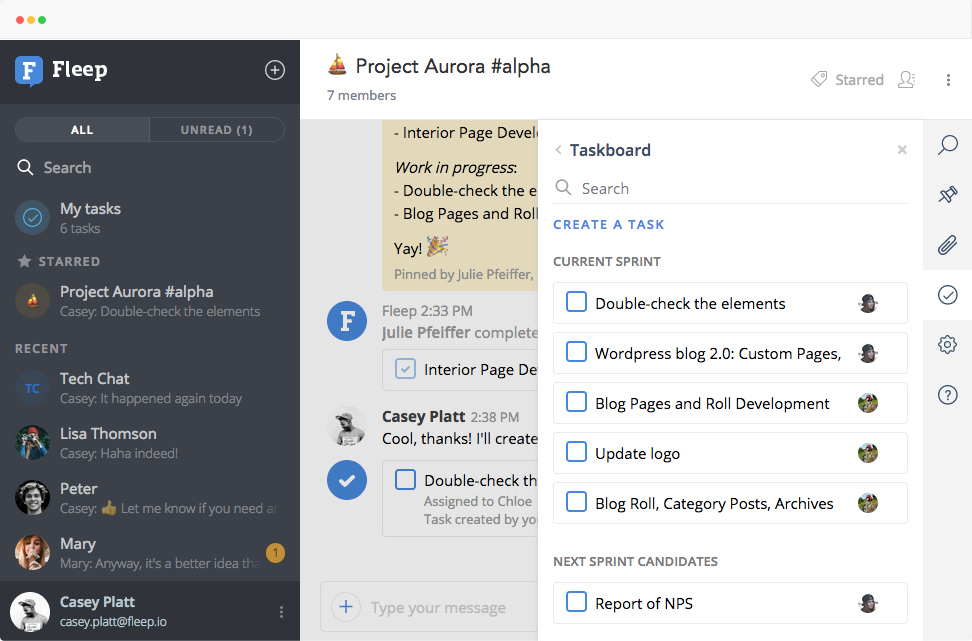
There are many benefits to having your tasks in Fleep conversations. First of all, it keeps you on track for a certain project, giving you an overview of what you need to get done and a sense of accomplishment for all the tasks you have ticked off as ‘done’. Additionally, the Fleep Tasks feature holds your team responsible. In group conversations, you can see everyone’s tasks and what they have accomplished. In this way, your whole team is on the same page!
How to create a task in Fleep?
You can either create a new task message or turn an existing message into a task. To create a new task message, click on the “Create a task” button on the conversation’s taskboard or simply start a new message with the “/task” quick command, followed by the content of the task:
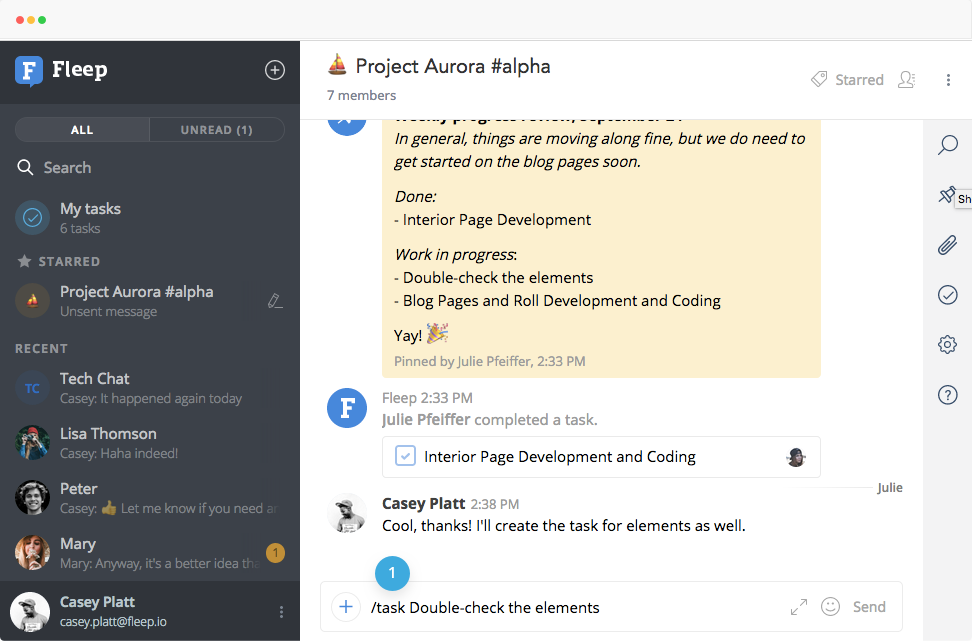
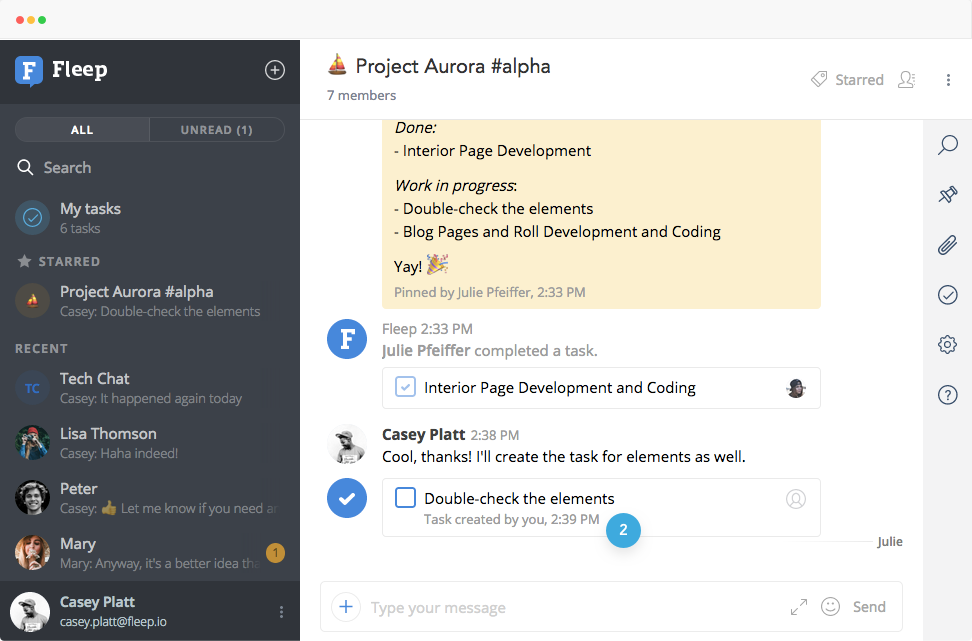
To turn an existing message into a task message, right-click on a message and find the “Create task” action in the message actions menu. The message will then be posted as a new task message to the conversation, leaving the original message intact. In the iPhone and Android apps, the option to create a task from an existing message appears when you long-press on the message:
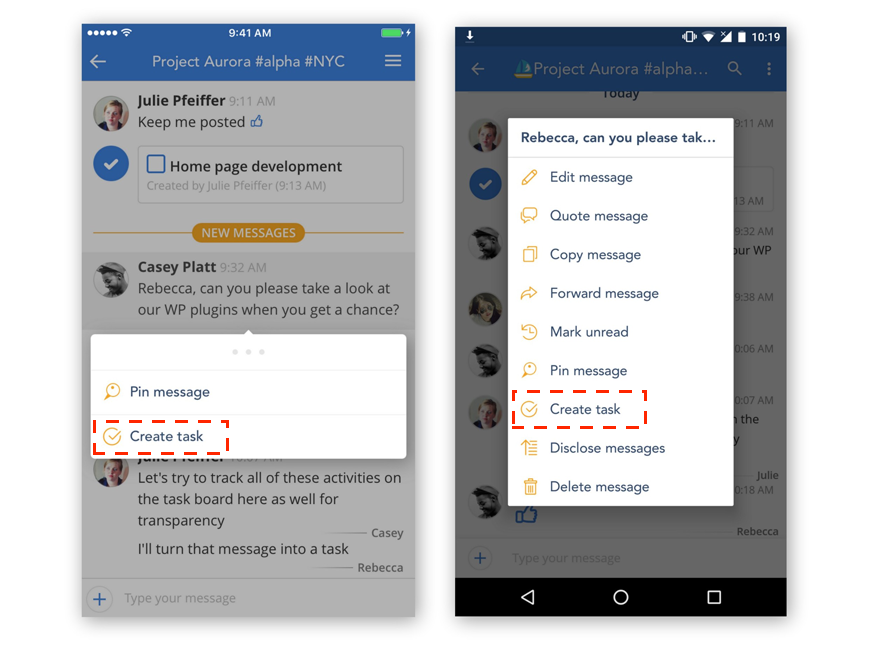
Where can I see all the tasks?
Every conversation in Fleep has a Taskboard, where you can see all tasks created in that conversation. To open the Taskboard, click on the task icon on the right-hand side toolbar inside the conversation.
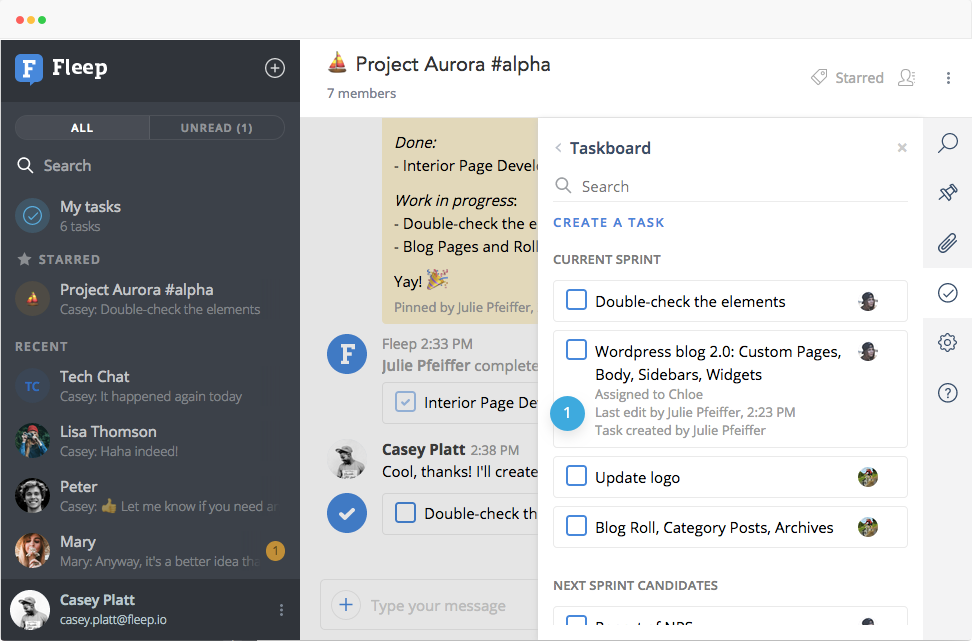
Expand any of the tasks to see more information about any task, like who has created it, who (if anyone) has edited it, and who has it been assigned to (if it has been assigned to anyone).
What can I do with the tasks?
While the Tasks in Fleep are quite lightweight and simple, you can do quite a few things with them. You can edit, assign, check off, delete tasks and much more! All of these features can be found in the task action menu. This will appear when you right-click on a task, or click on the tiny blue down arrow that you can see when you hover you mouse over the task. In mobile apps, the menu appears with a long tap.
- Edit - you can edit all tasks you can see in conversations, whether it’s correcting a typo, changing the wording, adding some more detail or anything else.
- Quote – copies the task message into the message box, with the context of who created it and when. Great for making comments about tasks!
- Copy message – copies the content of the task message.
- Assign - you can assign any task to yourself or to someone else in the conversation. This feature helps everyone understand who’s responsible for executing the task.
- Show in conversation – this action will take you to the place in the conversation where the task was created. It will help you in case you want to remember the context for the task.
- Archive - this option will archive the task, so it’s out of your way. You can see all of the archived tasks at the bottom of the taskboard.
- Add section – helps organize the taskboard (see more about organizing the taskboard below)
- Delete - sometimes, you just need to delete a task. After confirming the delete action, the task message in the conversation message flow will be deleted as well. (P.S. Delete is not available in the mobile apps.)
- Check off as “done” - ahhh, the pleasure of ticking things off of a to-do list. Whenever you have completed a task, you can just tick it off by clicking on the blye checkbox. Everyone in the conversation will be able to see that it is done.
How to organize the taskboard?
- Create sections - you can create sections on the taskboard to organize your tasks. At Fleep, our teams often use 2 sections, “Current sprint” and “Backlog”, as we swear by the Scrum methodology for organizing our work. But you could also create sections such as “Done”, “Work in progress”, “Not started” for your team conversations, or deadline-oriented sections such as “Urgent”, “This week” and “This month”.
- Reorder - you can move the tasks into different sections with the “Move to section” action or drag and drop the tasks to reorder them.
A few more tips:
- The “/taskto @” command – when creating a task with the slash command, you can try using “/taskto” followed by @mentioning a member of the conversation. In this way, the task will automatically be assigned to the person mentioned. For example.: “/taskto @juliepfeiffer Get designs from Joey” will create the task “Get designs from Joey”, which is already assigned to Julie.
- The /bug command – this is a favorite of all software development teams. Using the /bug command instead of /task will create the task with a bug emoticon.
What’s else?
If you’d like to see an overview of all tasks assigned to you, then the My tasks view is for you. It’s available with the Fleep for Business subscription.
P.S. Do note that Fleep Tasks do not compete with elaborate task management tools like JIRA or Asana. In fact, Fleep Tasks are a rather lightweight solution to track commitments right in the conversation where discussions happen and decisions are made. If you need a more in-depth workflow, tracking, deadlines and reporting then you may want to look into dedicated tools. The great thing is that Fleep plays nice with tools like JIRA or Asana. For example, Teleport uses both Asana and Fleep, while Bigbank uses JIRA and Fleep simultaneously.

